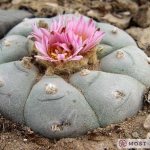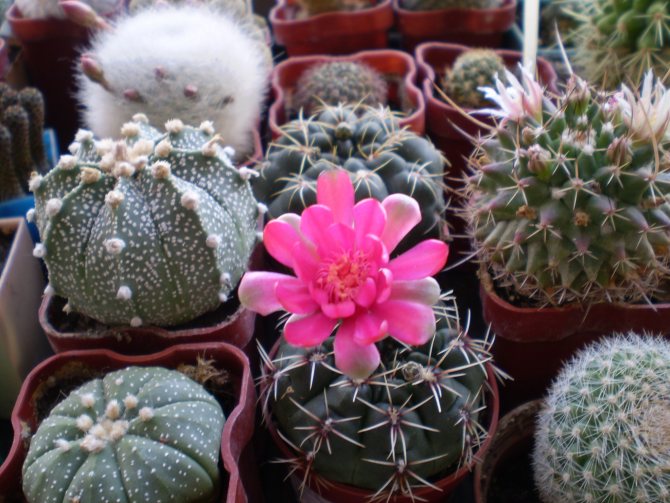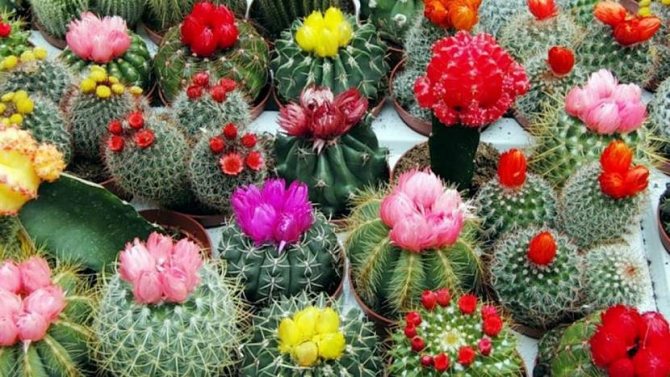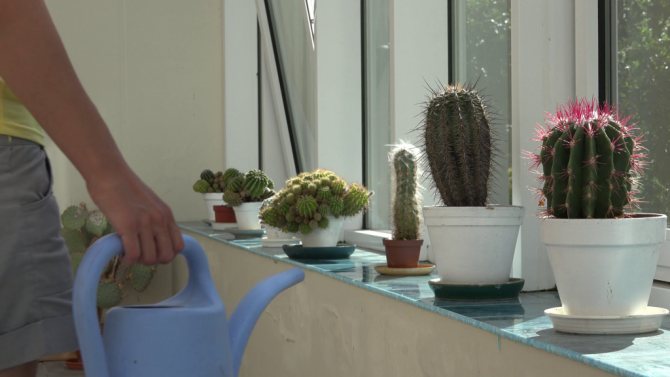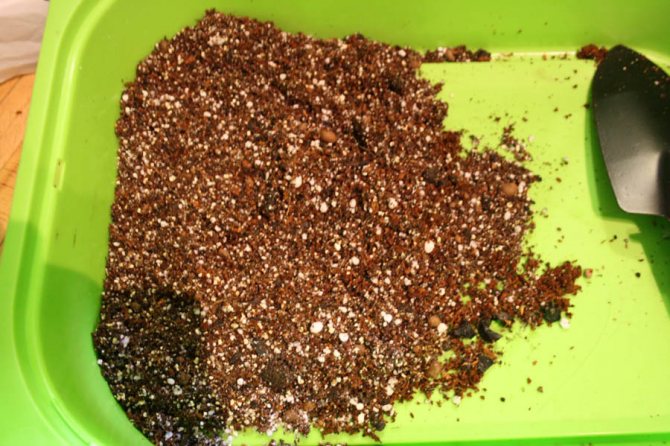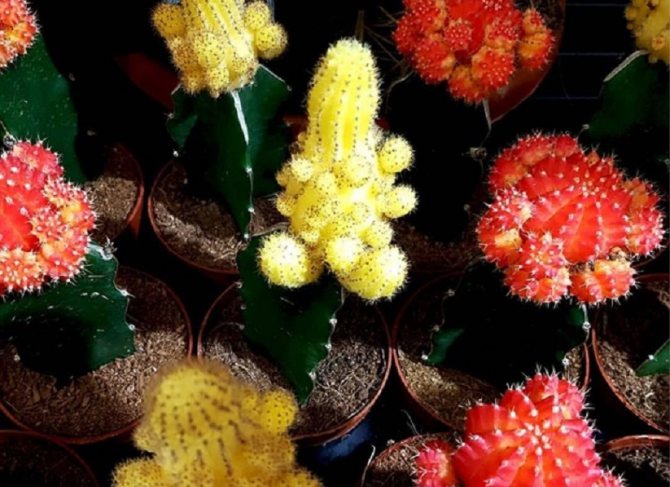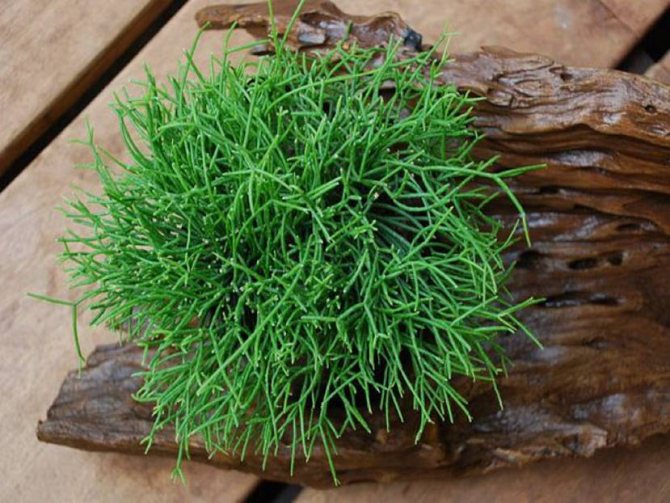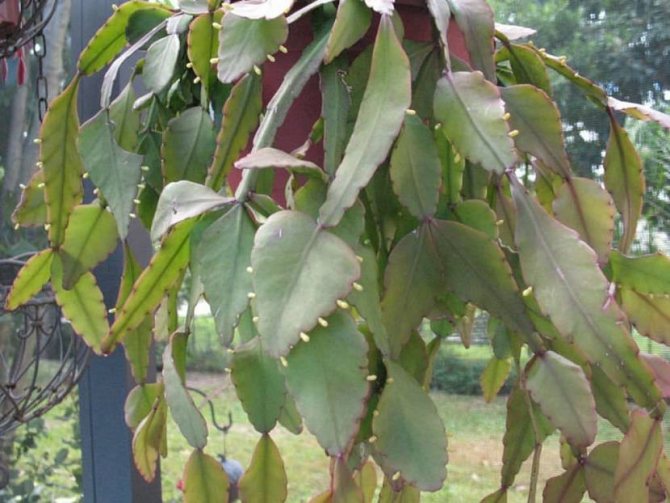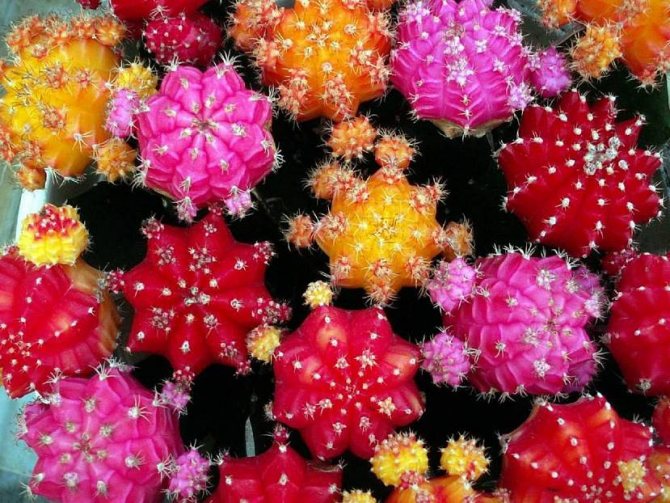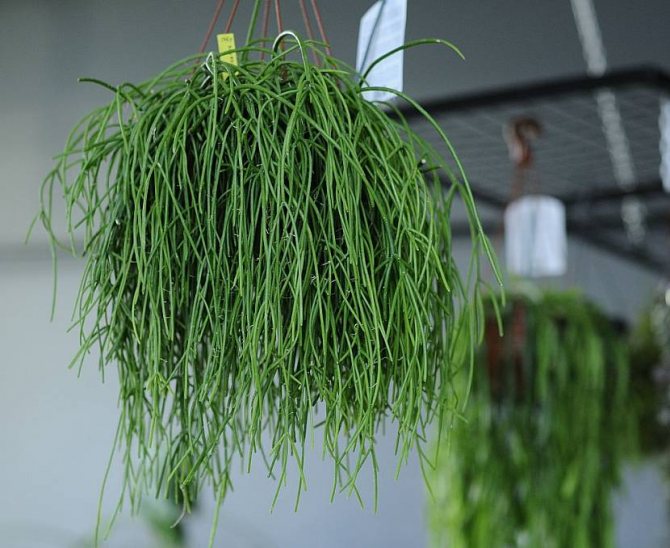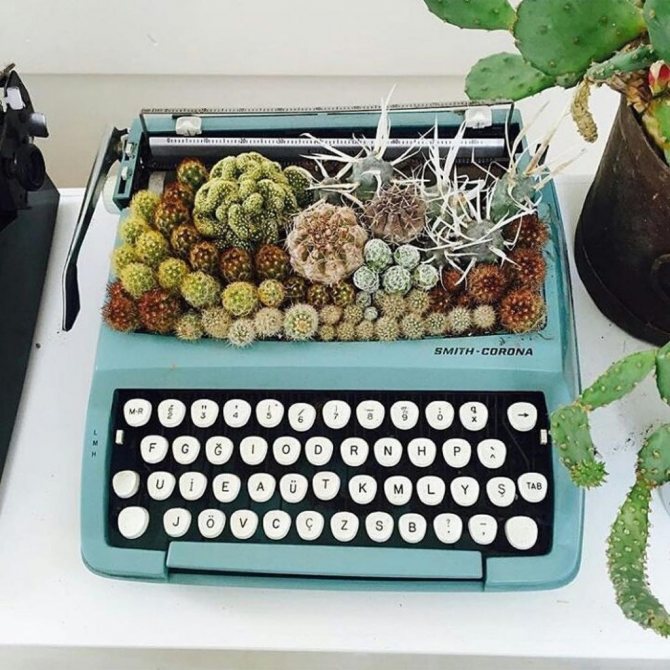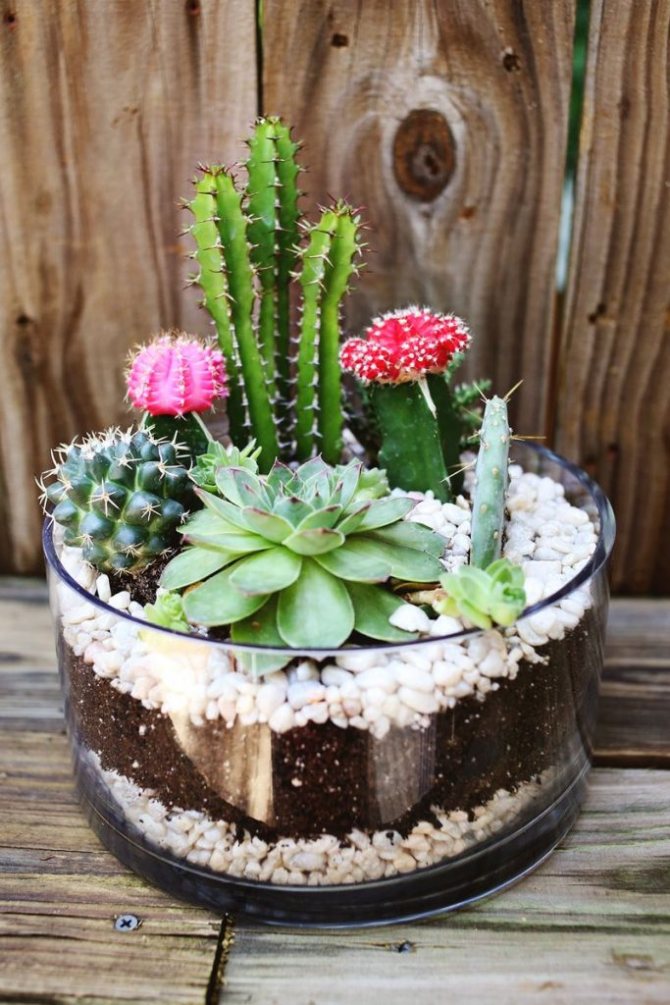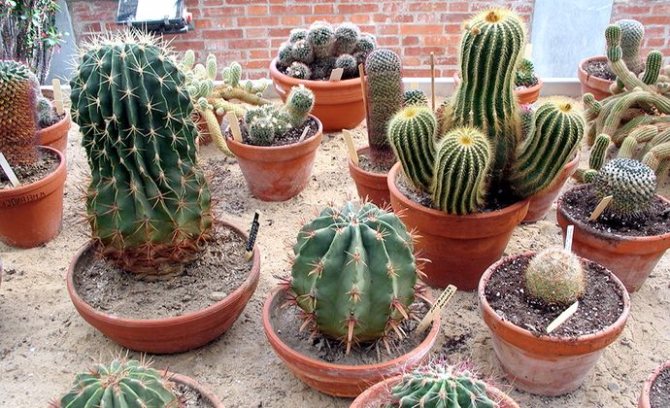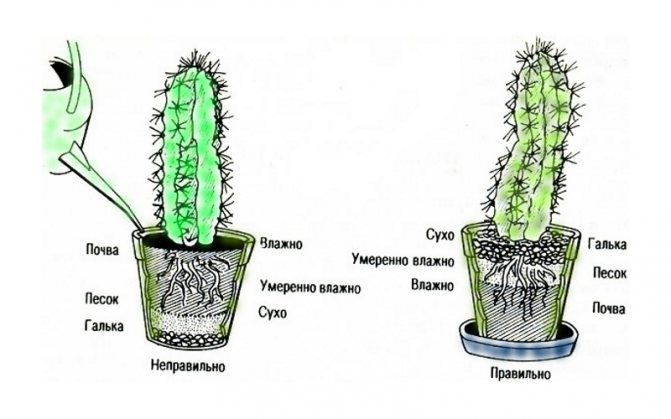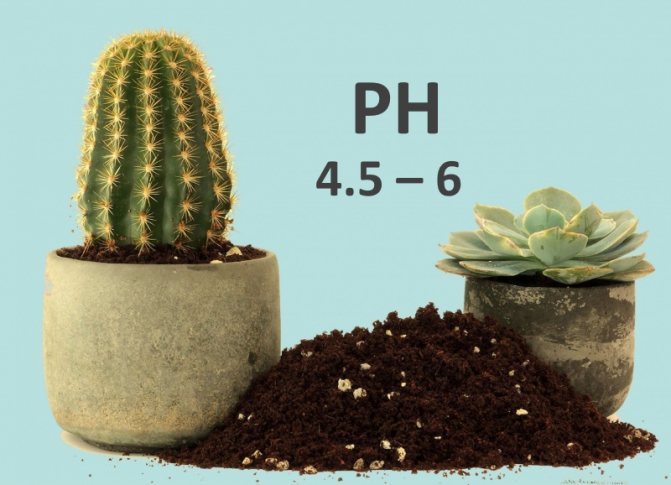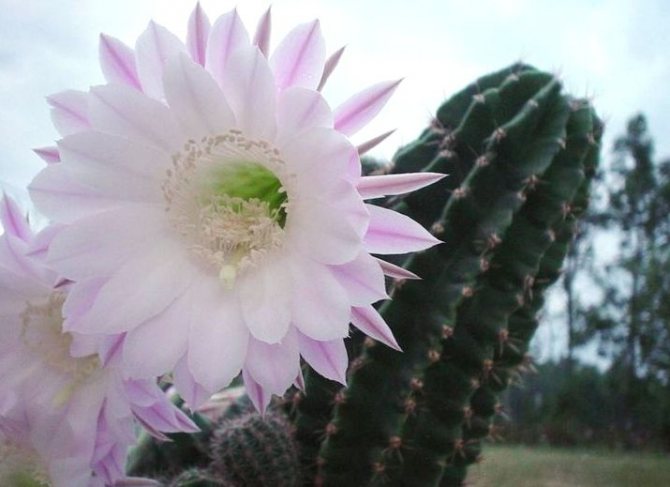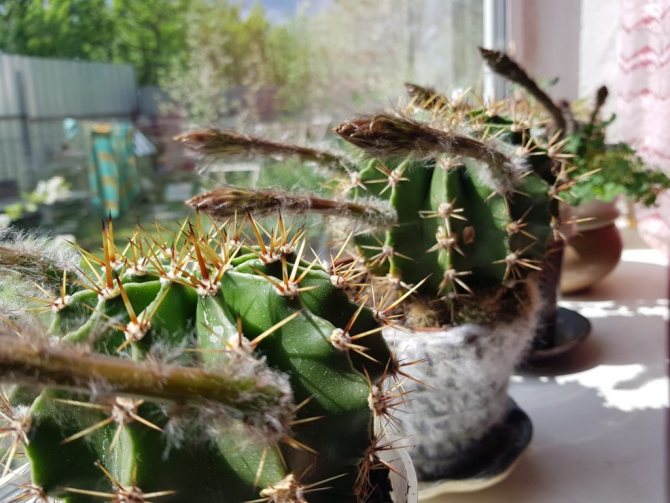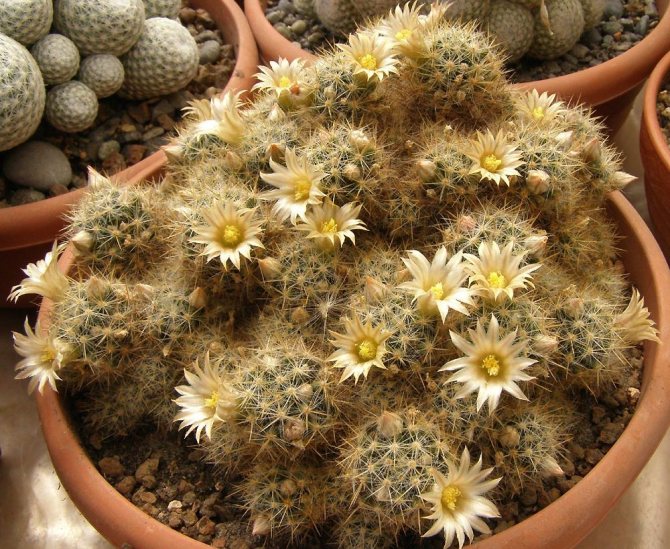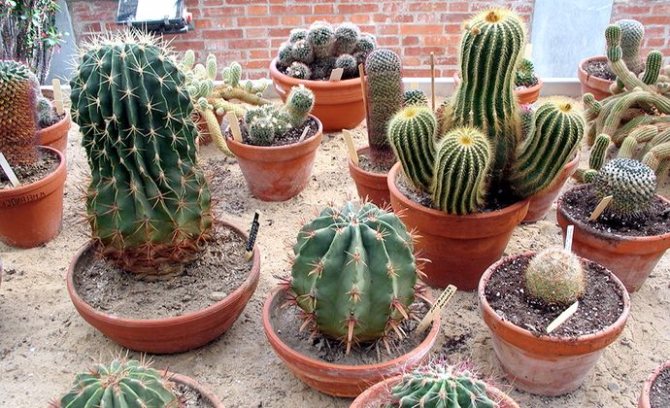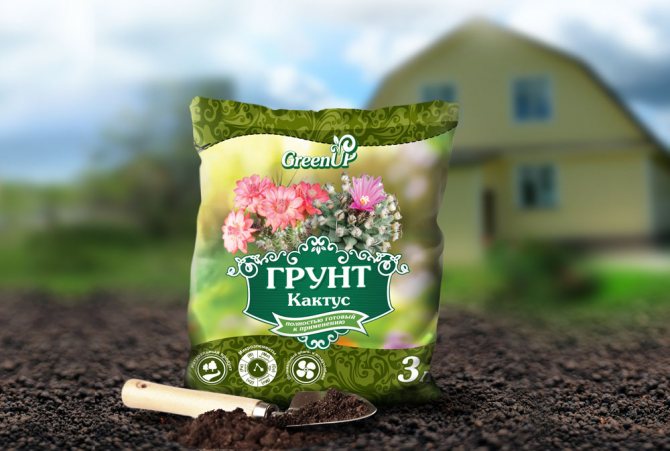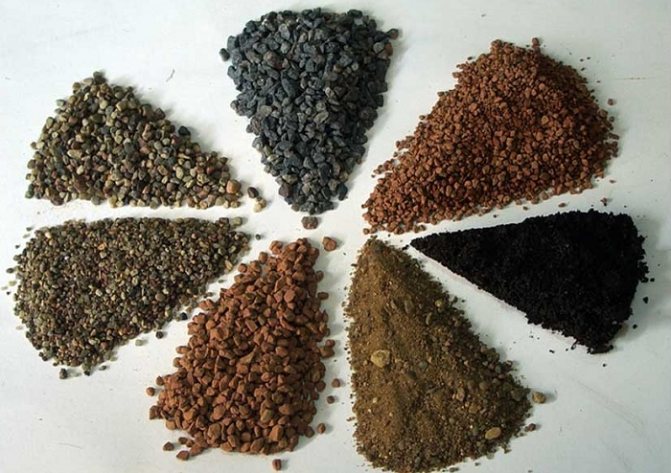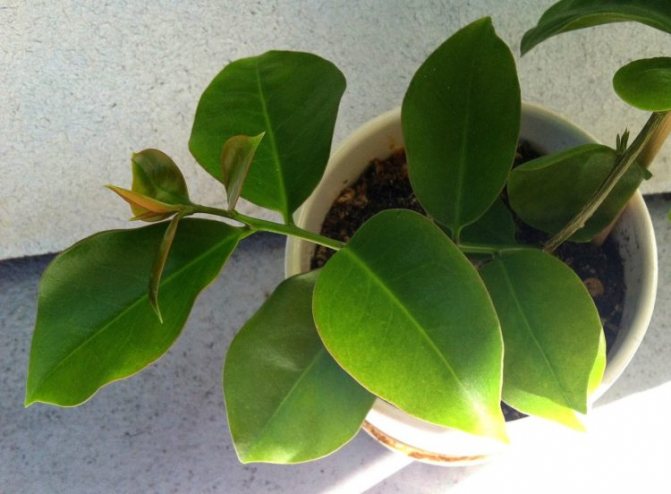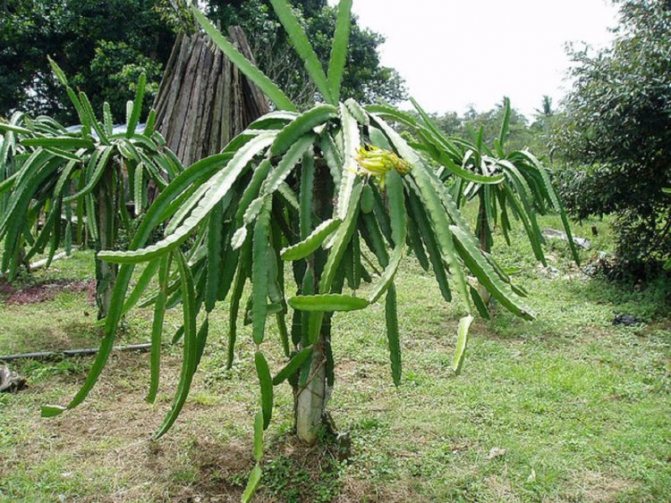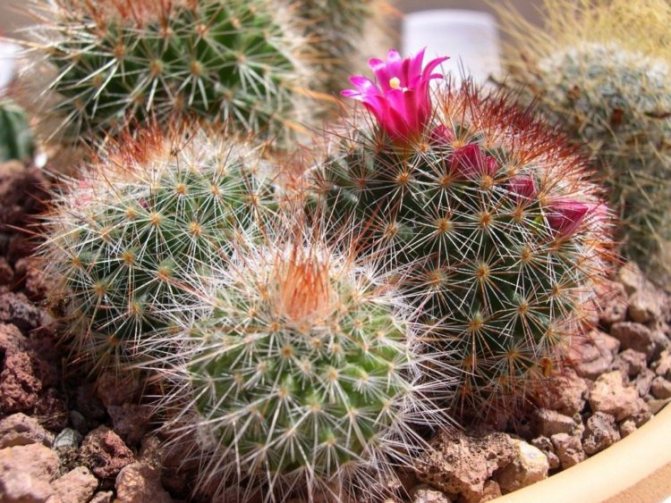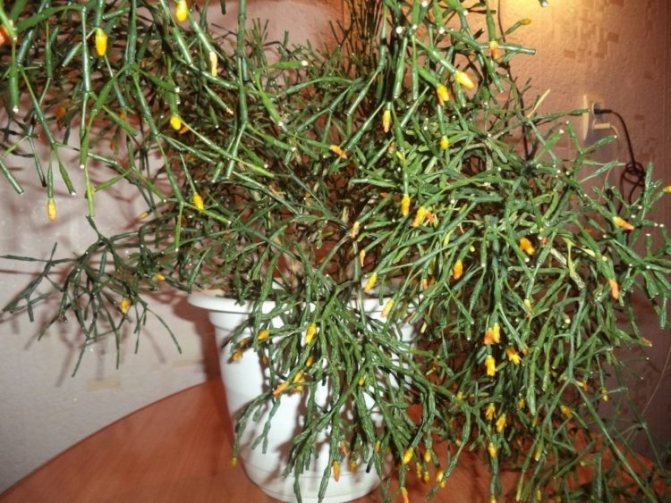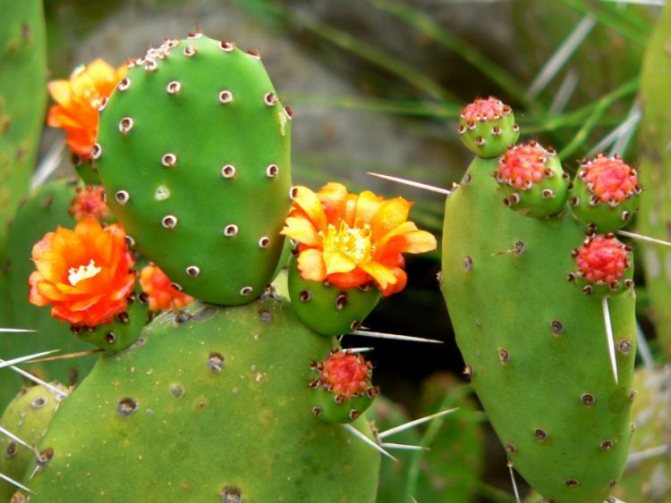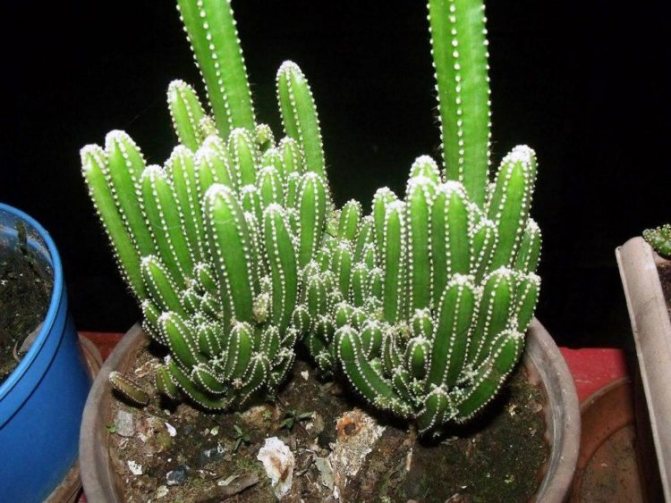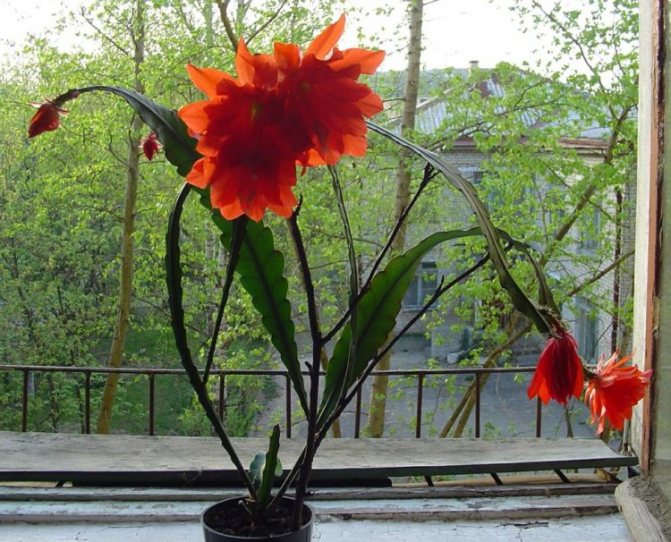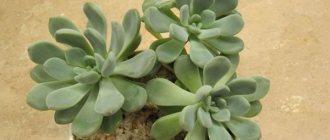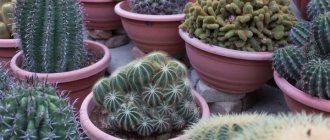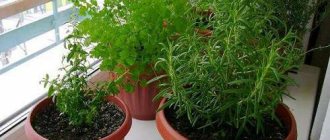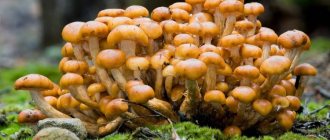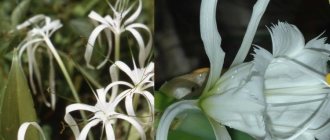The internet is full of photos and articles about beautiful mountains, places, movies, etc. But, unfortunately, so little is written about extraordinarily beautiful things. For example, about cacti.
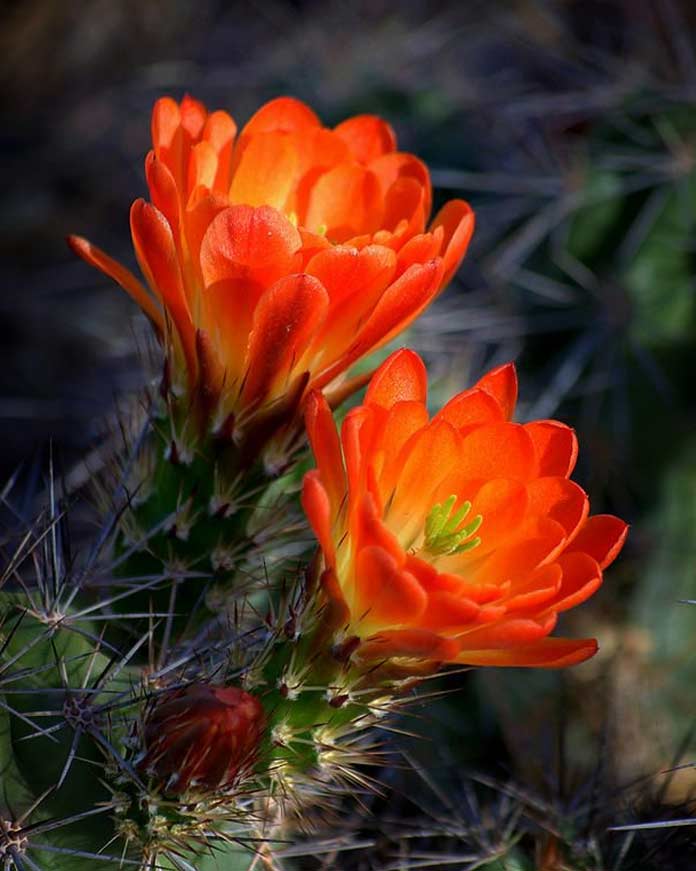
The family of these exotic plants has almost three thousand species. Surprisingly, they have such a thing in common as origins. They all come from America. Extreme conditions are not at all a problem for them. They store water and have a thickened layer of skin, which allows them not to lose moisture and be able to stay even in very hot and dry places on the planet.
However, even among such unusual plants, there are even more unique ones. In this article, we will tell you about the most beautiful cacti in the world. So let's go!
Lofofora Williams or Peyote
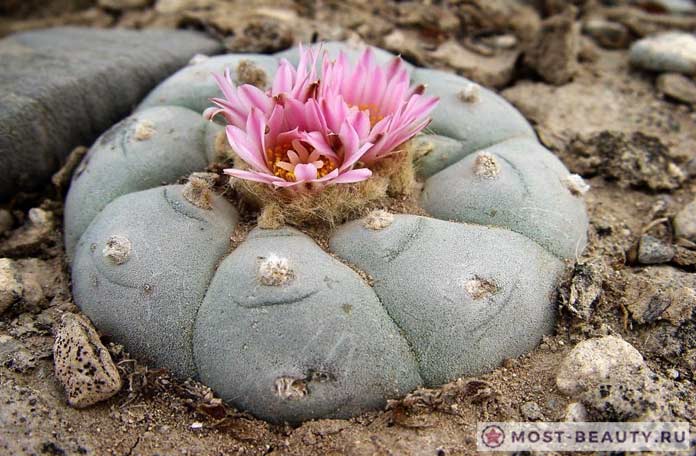

A plant that has the shape of a ball, its diameter reaches only 8 centimeters. Such a cactus cannot be bought and grown at home. Cultivation is prohibited by law because Peyote contains a fairly high concentration of mescaline (a substance with a psychedelic effect). But, given the fact that the Lophophore Williams cactus for a long time played an important role in the rituals of Indian tribes, only members of these population groups are allowed to officially use this plant.
About the homeland of succulents and their distribution
Today, these cactuses grow on any continent where climatic conditions are suitable for them. But even where the climate is not suitable, they are successfully grown in greenhouses and as indoor flowers.
It is interesting! As for the first historical mentions of the country of origin of cactus plants, in the second half of the 16th century, a German scientist, the "father of botany" Jacob Theodor Tabernemontanus, released his own herbalist, which gained immense popularity. In it, he described some of the varieties of these succulents, which were native to the shores of South America.
So it turns out that cacti became known outside the country of origin not earlier than the discovery of America by Christopher Columbus. And South America is recognized as the homeland of the indoor cactus. It was from here that these plants began to spread throughout the planet, taking root even where the climate was different from the usual. Some varieties were first discovered in North America and also in the West Indies.
Rhipsalis baccifera grows not only in America, but also in Africa, Madagascar and Sri Lanka. They got here without human help, because it is believed that the seeds of these plants were spread by migratory birds.
But the most beautiful prickly pear, consisting of flat palm leaves, can be found in India, the Mediterranean countries, Germany, Austria, Mozambique, on the islands of the Malay Archipelago and even in Australia, thanks to the intervention of human hands. Opuntia humifusa species grows far from its native shores, and not only in the Mediterranean, but also on the shores of the Crimea, in the southern regions of the Volga region, on the Russian Black Sea coast, in the regions of Gelendzhik and Novorossiysk.
And although their homeland is elsewhere, cacti almost everywhere feel at home, including on home windowsills. Especially if they receive proper care based on their needs.
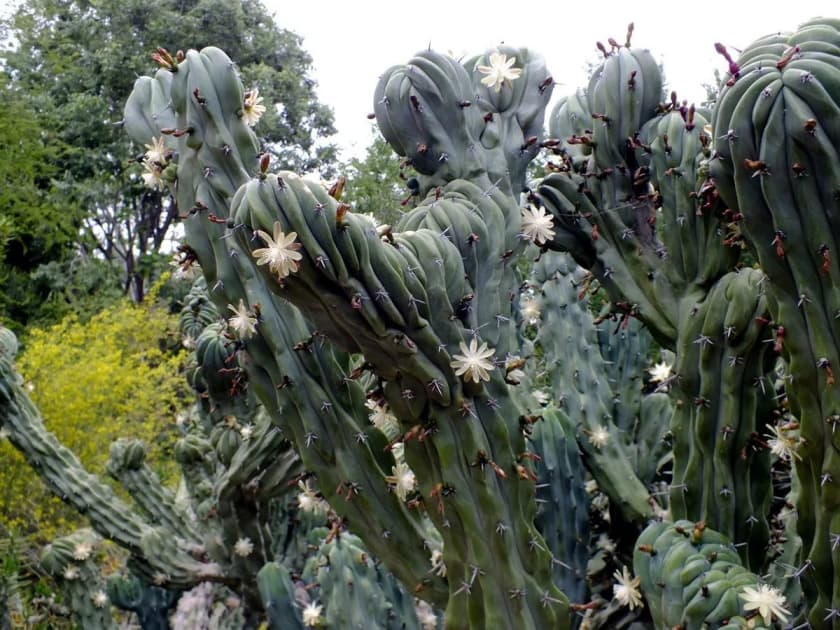

Hilocereus wavy
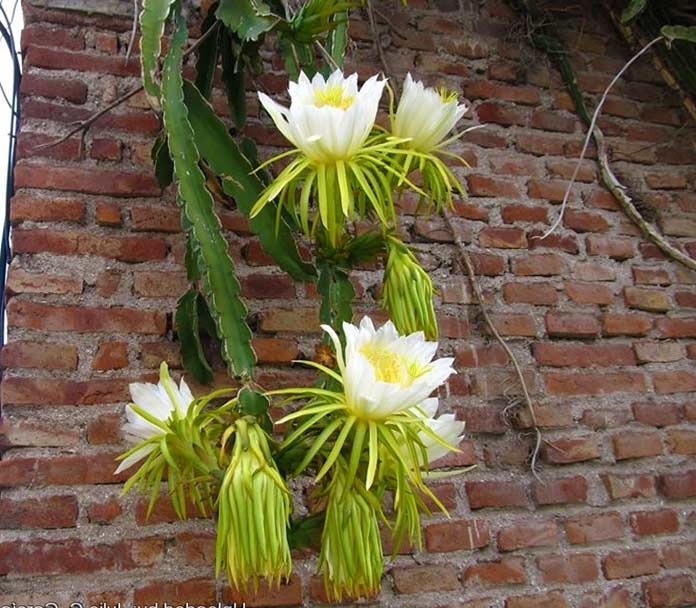

This species is famous for its extraordinarily beautiful flowers. Few people perceive cacti as flowers. But looking at the wavy hilocereus, you can change this point of view once and for all. The flower is almost forty centimeters long and 25 centimeters in diameter. A feature of this species is that it blooms exclusively at night, each flower of the plant opens only once.
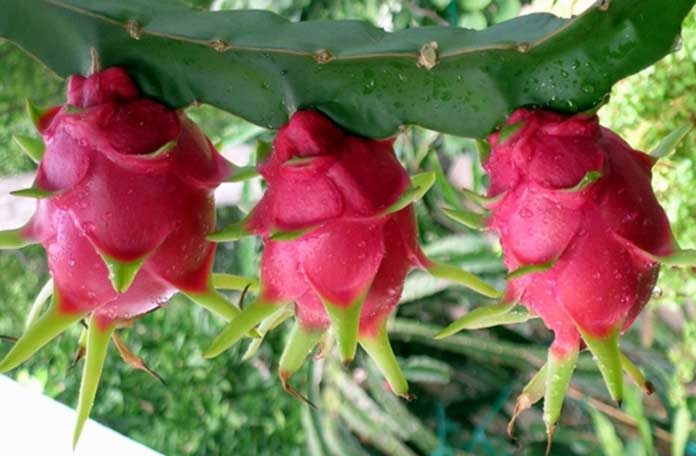

The flowers emit an incredibly pleasant vanilla aroma. However, it should be borne in mind that the aroma is pleasant only at a distance, since if you directly inhale the smell, it can turn out to be unbearable. The pictures that can be found on the Internet do not convey all the beauty of this plant, therefore you can fully enjoy its beauty only live.
Output
Today, cacti are no longer exotic indoor plants: many growers prefer to grow them, rather than the usual bushes. At the same time, choosing a cactus variety to taste is quite simple: a huge number of species allow you to choose the best option - with or without needles, round, elongated or hanging, blooming or without flowers at all. Despite the seeming unpretentiousness, cacti require some care and attention, otherwise the plant may not bloom at all.
Turbinicarpus underground
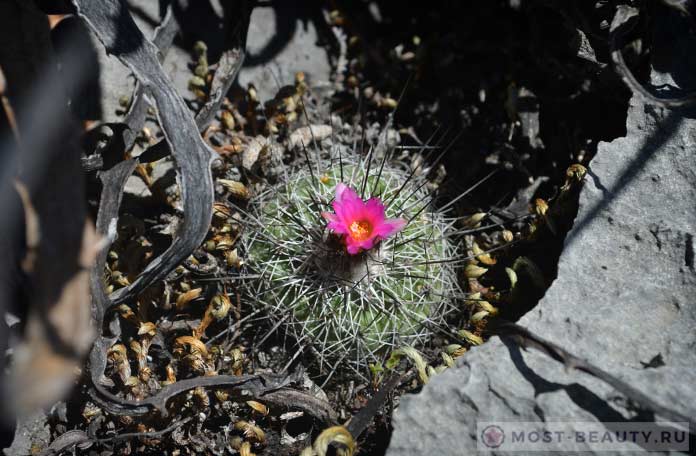

An atypical, but beautiful cactus, since above the surface of the earth you can see only small heads, which in their shape resemble a bat. However, underground, it has roots that have the ability to store water and help the plant survive periods of drought. And in the cold season, the cactus is frost-resistant due to its underground location.
Blossfeldia dwarf
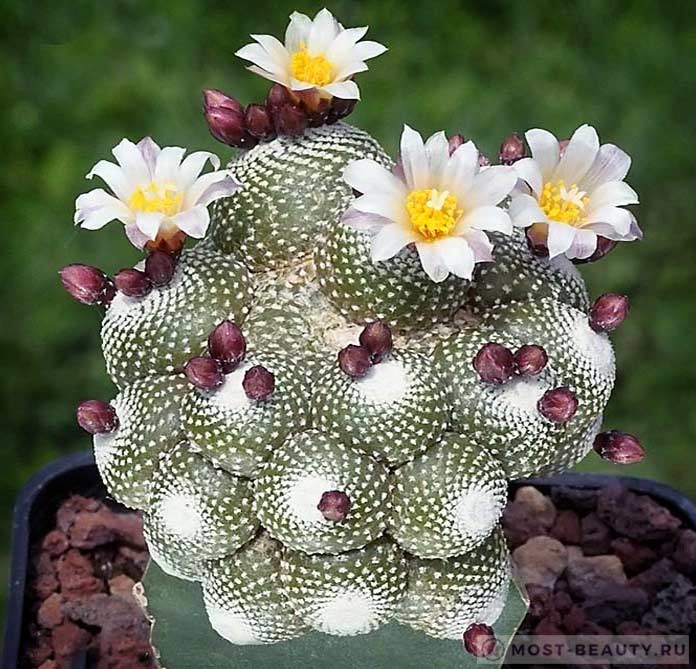

It is the smallest of all cacti on the planet. Blossfeldia dwarf grows from a depression in the center of the plant, due to which a beautiful pattern appears during its growth. This plant blooms in the warm season - in summer, fertilizes independently, produces seeds. True, they are too small in size, therefore they often merge with sand.
Those who decide to plant such a cactus in a pot at home will have to be patient. Since the dwarf blossfeldia is a very slow-growing plant.
Home flowering cacti:
Basic rules for caring for a cactus at home
There are 3 main directions for growing cacti: indoor, greenhouse and garden. Each of them has its own agricultural technology. No matter how different the methods of growing these plants, they are all based on the biological characteristics of this natural kingdom. The basic tips for growing this crop are as follows:
- Select the appropriate area of the area and determine the place that could be set aside for cacti.
- Choose the types of cacti depending on the location of the apartment windows. With the south, south-east and south-west orientation of the windows, almost all types of plants can be placed; in the east and west - parodies, hymnocalycium, rebuts and some spherical cacti; in the north-east, notocactus and other flat-shaped specimens.
- Ensure a fairly cold (5–10 ° C) and completely dry (no watering from December to March) winter.
For growing cacti, it is most convenient to use plastic pots. Their sizes are selected depending on the diameter of the cactus.
The opinions of scientists regarding the most favorable soils for the growth of cacti are strikingly different. The vast majority of these plants are not associated with any particular type of land. Therefore, in collections, they can grow in a wide variety of substrates.
You need to use fertilizer for cacti with great care. It is better to transplant them into fresh soil than to experiment with the selection of nutrients. Always remember: excess nitrogen in the soil is harmful to cacti.
In its homeland, the cactus experienced constant stress and, over the years of evolution, adapted to survive in harsh conditions. Getting into an apartment climate with an excess of food, water and a simultaneous shortage of light tends to actively grow to the detriment of appearance.
Video: Lesson on transplanting a cactus
Rhipsalis
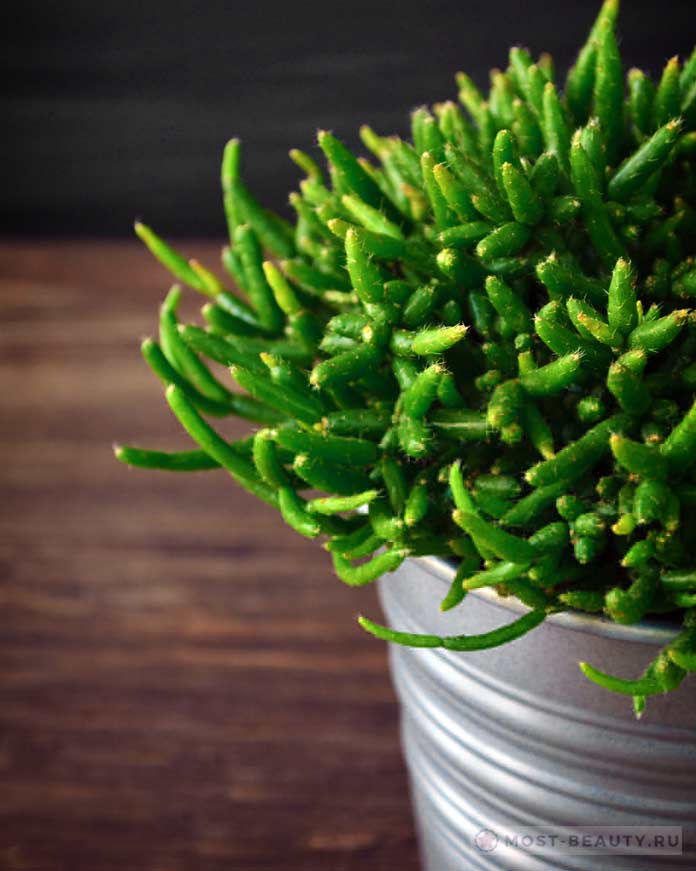

This species does not look like a regular cactus. It looks like branching, succulent shoots of green-yellow color. The stems have aerial roots that are able to absorb moisture directly from the atmospheric air. Cactus fruits look like very medium-sized berries with a large number of black seeds. It blooms in the cold season with white, yellow or pink flowers.
Pests, diseases
Cactus is one of those indoor plants that cause a minimum of trouble to the grower. But, due to a violation of the conditions of agricultural technology, the cactus can also get sick. Most often, plants suffer from wet and dry rot, fusarium. The disease occurs due to over-watering during the winter when the plant is at rest. If only part of the stem of the cactus is rotted, it can be saved by cutting off the healthy top and rooting it. For prevention, it is recommended to sometimes water the flower with a pink solution of potassium permanganate or phytosporin, and most importantly, observe the watering regime.
On a note... The higher the ambient temperature, the more demanding the cactus is for the presence of moisture in the soil. In cold wintering conditions (at +8 +10 degrees), the flower is rarely watered.
Spider mites, mealybugs, and nematodes can parasitize cacti. The presented photos show accumulations of the pest on the plant.
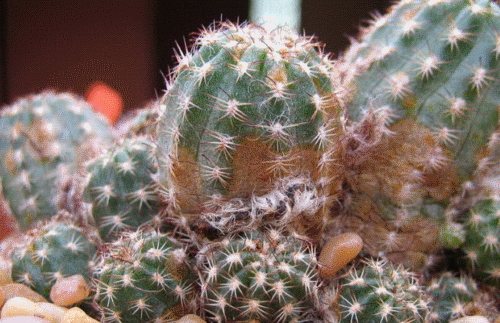

Spider mite on a plant
Get rid of parasites by replanting the cactus in a new clean substrate. From the spider mite, the plant is washed with soapy water.
Echinopsis
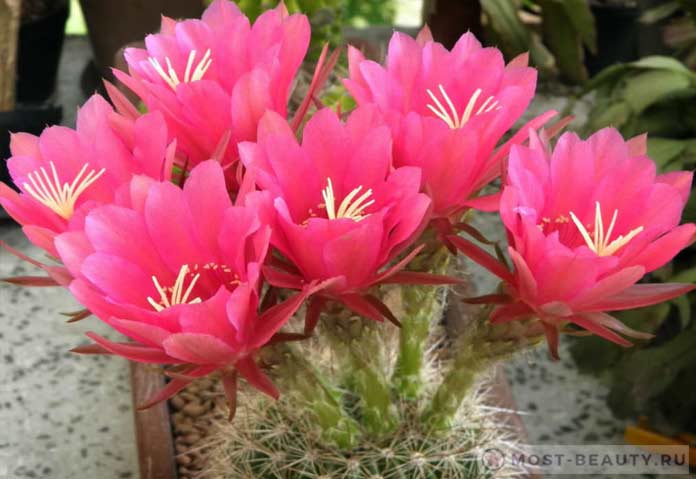

Most common among home grown cacti. It is completely unpretentious and is a very diverse species in its shape and size. It is popular for its beautiful and large flowers. The petals can be arranged in several rows and are colored in shades of white, yellow, pink, orange and purple. The plant blooms since spring, flowering can last up to six months.
Plant classification
Succulents come in many different types. They can be divided into four groups:
- Pereskivae with full leaves are something in between a thorn and deciduous plants.
- Opuntia have reduced leaves and very fragile thorns.
- Mauchiens are found in Patagonia. Outwardly, they are very similar to prickly pear.
- Cactus are the most common. This group includes most of the usual succulents. Their stem has a spherical or cylindrical shape, beautiful flowers.
And also these groups can be decomposed into 9 subgroups:
- Deciduous.
- Leafy.
- Elongated or candle-shaped.
- Multi-stemmed.
- Spherical.
- Black-eyed.
- Papillary.
- Coral-like.
- Palm-shaped.
Each subgroup has its own characteristics, both in appearance and in terms of content.
Epiphyllum
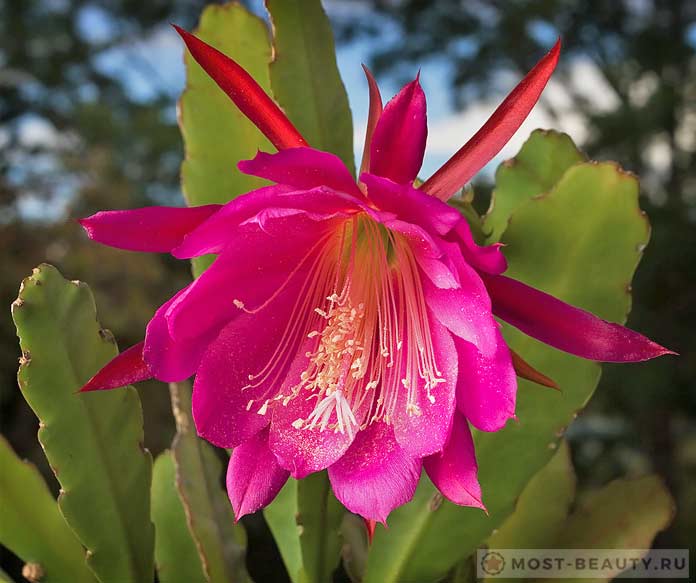

It blooms mainly in the warm season and has beautiful and massive flowers of various shades, the diameter of which is ten centimeters, and sometimes even exceeds it. Even growing a cactus at home in a pot with artificial cross-pollination of flowers, you can get such large fruits, the pulp of which is edible and has a sweet pineapple-strawberry flavor.
Mammillaria
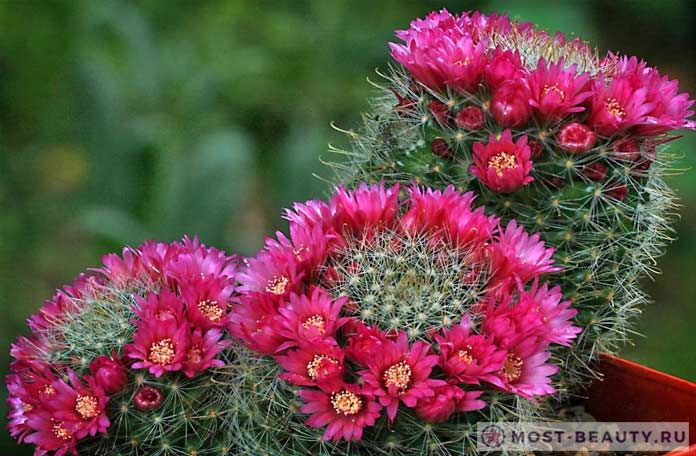

Small plants with mace-like shoots. Their peculiarity lies in the characteristic structure - in the form of numerous papillae, which can grow, forming colonies.
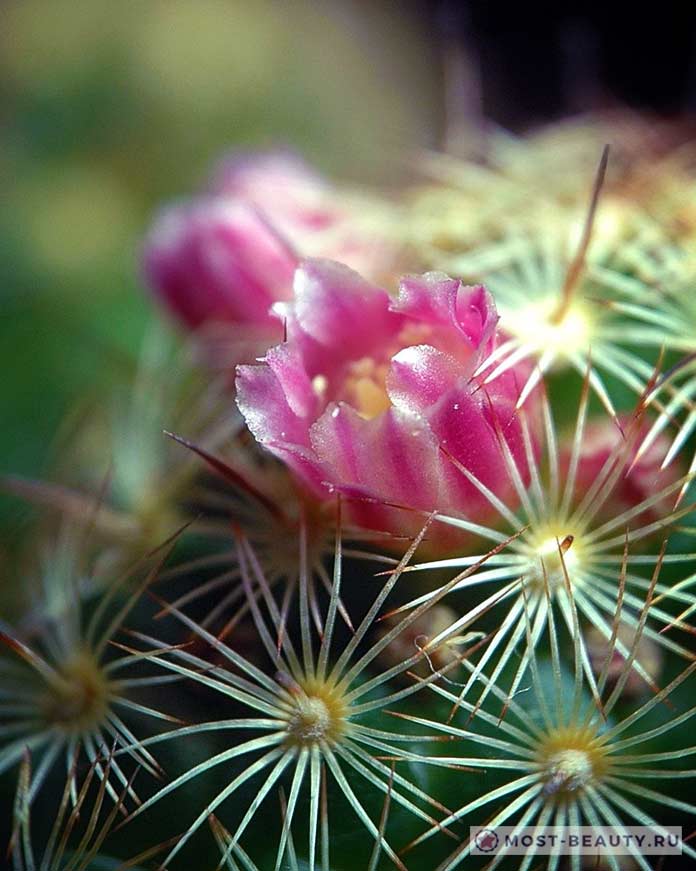

Therefore, you need to plant such a plant in wide and flat pots.They have a high variability in a variety of flower shades, which usually bloom in March, forming a kind of crown around the top of the stem.
The most popular types of cacti with photos, names and a short description
In each subgroup of cactus crops, there are several of the most popular representatives that deserve increased attention. Scientists classify cacti by their appearance.
Shrubs
Hilocereus is an impressively sized plant belonging to the Cactaceae family with very attractive flowers and fragrant fruits.
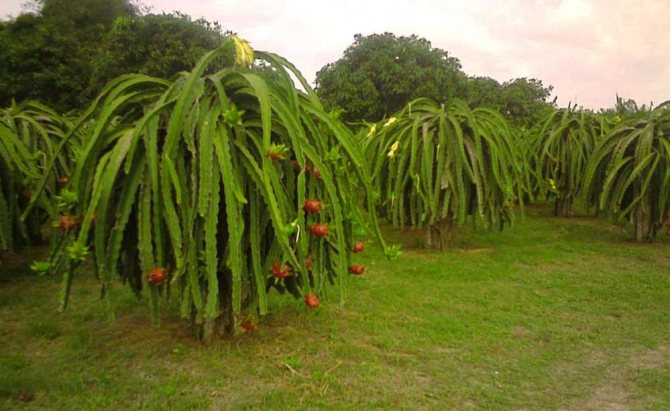

In countries with a tropical climate, the Hilocereus cactus is grown for the fruit called pitahaya
Tree-like
Cereus - has a long cylindrical stem. It can reach twenty meters in height, the duration of the growing season is up to three hundred years.
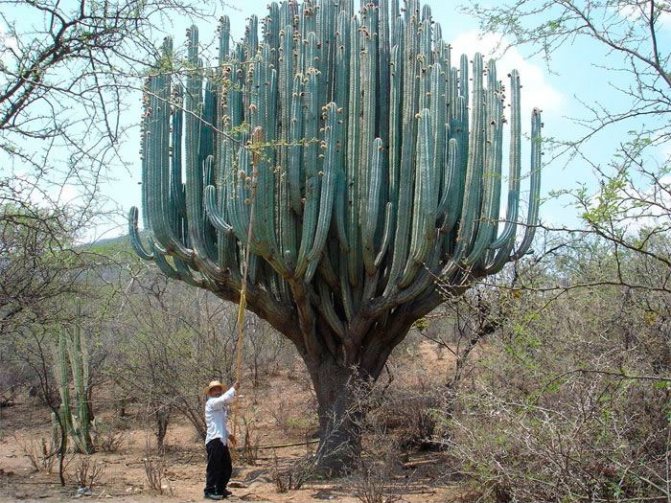

Cereus cactus in the wild reaches gigantic proportions
Herbaceous
Mammillaria is the most evolutionarily advanced genus of cactus, which is an example of a very deep adaptation to a hot arid climate. These are usually medium-sized plants. Stems are spherical, elongated or flat disc-shaped, from 1 to 20 centimeters in diameter and from 1 to 40 centimeters in height.
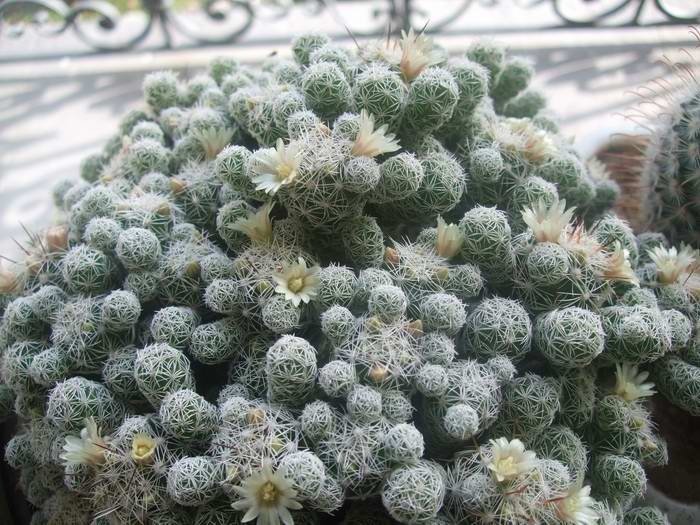

Mammillaria cactus requires a lot of sunlight
Liana
Selenicereus large-flowered is a climbing plant with a stem length of up to five meters and a diameter of 1 to 2.5 centimeters. It has six to eight ribs. Areola without numerous hairs. They produce bristly and sharp spines that are whitish to brownish in color. They can reach lengths up to one and a half centimeters and later fall off.
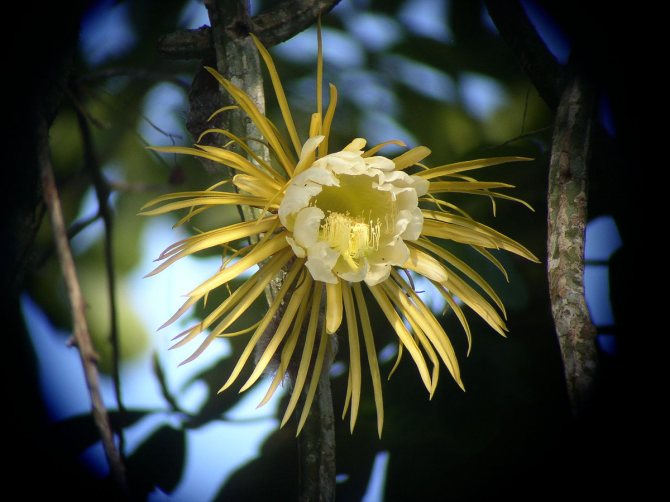

The Selenicereus large-flowered cactus is the most popular of the 24 species of the Selenicereus genus.
Parody of subterrania
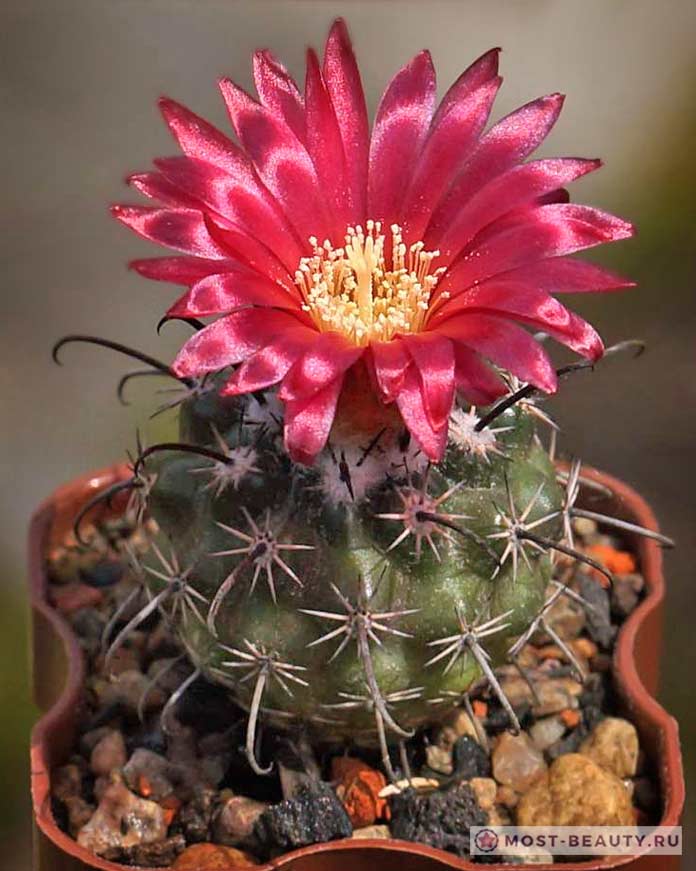

This species is reputedly hiding almost entirely under the soil (in its habitat) and is extremely difficult to find in nature unless it blooms.
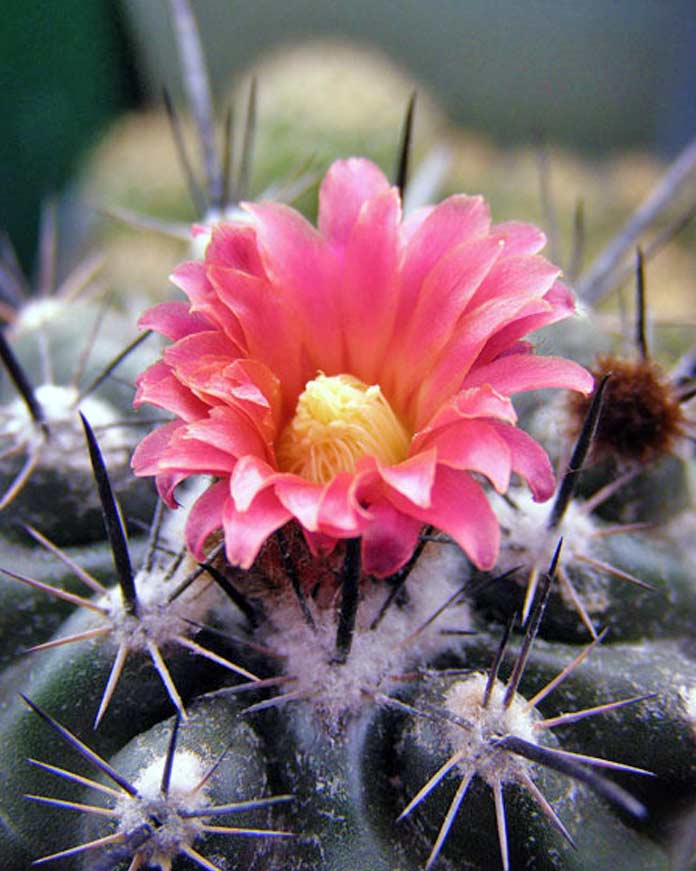

The stem of the cactus has a spherical shape (sometimes slightly elongated vertically), rarely branches. Size: 6-12 cm in diameter.
With proper care, this cactus will delight you with its pleasant flowering.
Astrophytum
The name of this type of cactus is taken from the Greek language and in translation means "plant-star", because if you look at it from above, this cactus looks like a star with rays.
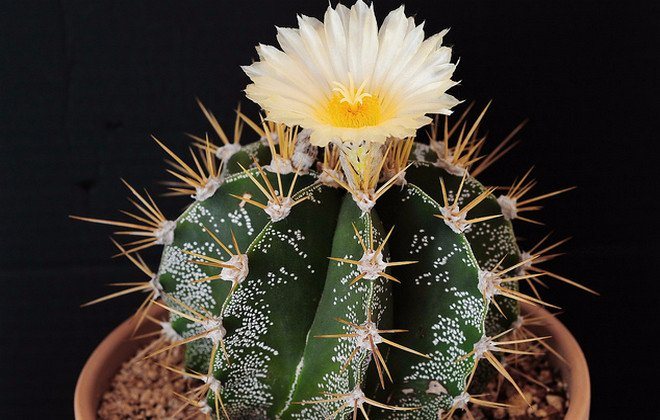

This species is distinguished by a variety of subspecies: some of them are without needles, and some boast rather long curly needles; some grow quite quickly, while others need a long time to grow even a couple of centimeters.
Stem: strong, spherical, elongated.
Flowers: wide opening, white or yellowish in color. They bloom at a young age.
Flowering period: 2-3 days in spring-summer.
Maintenance and care: require good lighting, tolerate direct sunlight, but prefer diffused light. They are tolerant in hot weather, they feel comfortable in rooms where the temperature does not exceed +28 ° С.
During rest, it is better to keep such cacti at a temperature of + 10 ... + 12 ° C. Do not need additional manipulations to humidify the air. During the growing season, astrophytums should be watered rarely (after the earth is completely dry) and so that the soil is completely saturated with water.


It is better to carry out bottom watering so that water does not fall on the plant itself. In autumn and winter, if you keep such cacti at low temperatures, you do not need to water them.
Cacti also include hatiora, epiphyllum, ripsalis, echinocactus Gruzoni, hymnocalycium, Decembrist flower, prickly pear.

